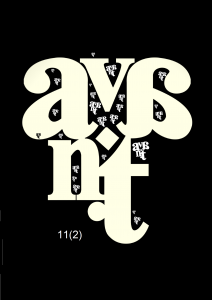The Self-Revelation and Cognition of VR-Facilitated Virtual Worlds: Towards a Phenomenology of Virtual Habitation
The Self-Revelation and Cognition of VR-Facilitated Virtual Worlds: Towards a Phenomenology of Virtual Habitation
Author(s): Matthew E. GladdenSubject(s): Aesthetics, Philosophy of Mind, Phenomenology, ICT Information and Communications Technologies
Published by: Ośrodek Badań Filozoficznych
Keywords: virtual reality; virtual worlds; transmediality; space; purely intentional objects; phenomenology; aesthetics; Ingarden; Norberg-Schulz;
Summary/Abstract: In this text it is argued that immersion in virtual reality (VR) with the aid of contemporary VR equipment may offer access to novel types of virtual worlds that differ qualitatively from the “real” world and from other types of fictional worlds. The text begins by (a) distinguishing between VR systems, virtual environments, and virtual worlds; (b) showing how the virtual worlds facilitated by VR systems resemble and differ from the “virtual worlds” created in one’s mind when, for example, reading a novel or watching a film; and (c) identifying necessary and optional elements of a VR-facilitated virtual world. Employing a phenomenological approach that draws on the thought of Ingarden and Norberg-Schulz, it is shown that a visitor to a VR-facilitated virtual world can (and frequently does) shift his or her conscious attention along three different “axes”. First, one’s attention can move “horizontally” between the media that disclose the virtual world through different senses. Second, one’s attention can shift “vertically” between the virtual world’s different ontological strata, including its layers of myriad atomic stimuli; distinguishable elements that possess spatiotemporal extension; assemblages of elements that have a context and relations but lack individual meaning; glimpses that build up a lattice of meaning and contribute to one’s knowledge of the world; and the virtual world envisioned as a coherent mentally concretized whole. Third, one’s attention can shift “interspatially” between the many different overlapping constituent spaces of the virtual world, including its perceptual, concrete, natural, built, identifiable, technological, emotional, social, economic, political, cultural, ecological, and possibility spaces. This triaxial phenomenological framework can shed new light on the rich and diverse ways in which VR-facilitated virtual worlds manifest themselves as emergent wholes constituted within human consciousness; also, it suggests approaches by which visitors might more proactively mentally explore and come to inhabit such virtual worlds.
Journal: AVANT. Pismo Awangardy Filozoficzno-Naukowej
- Issue Year: 2020
- Issue No: 2
- Page Range: 1-26
- Page Count: 26
- Language: English

